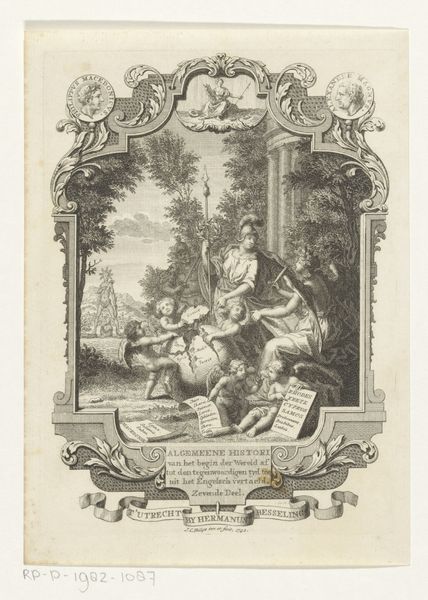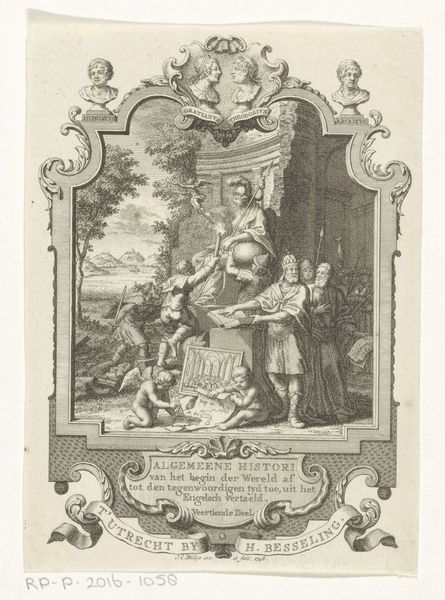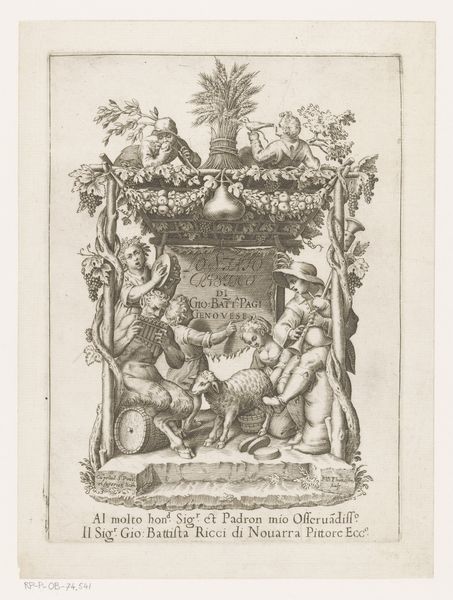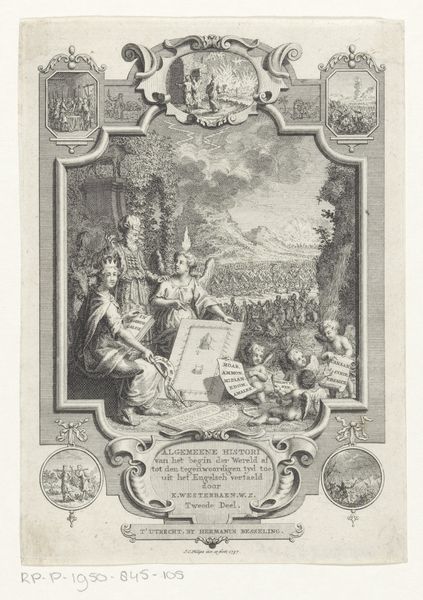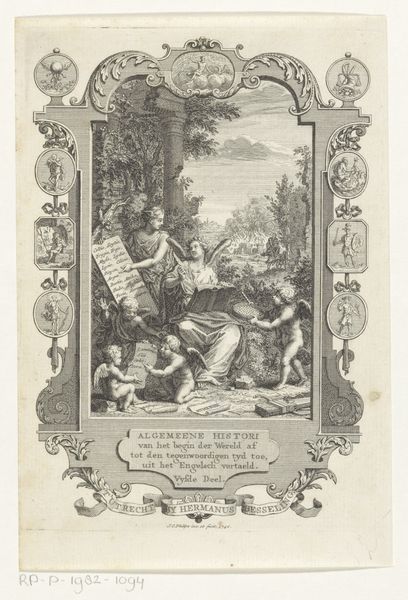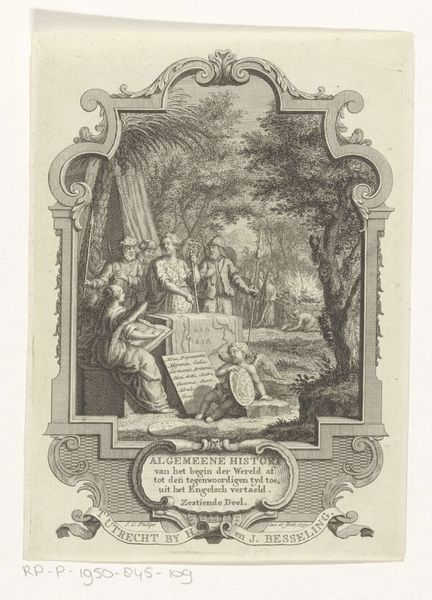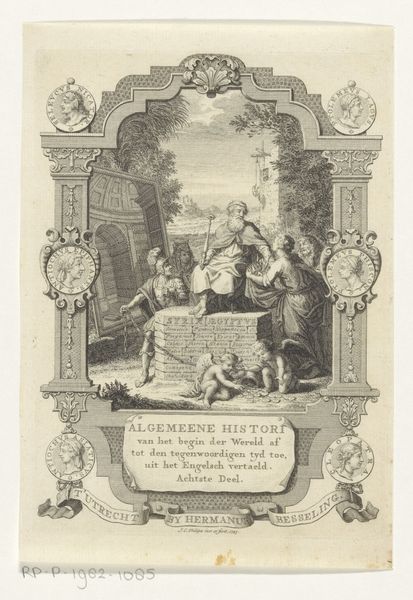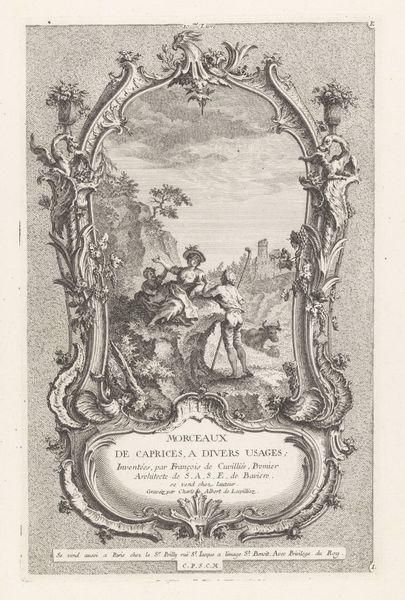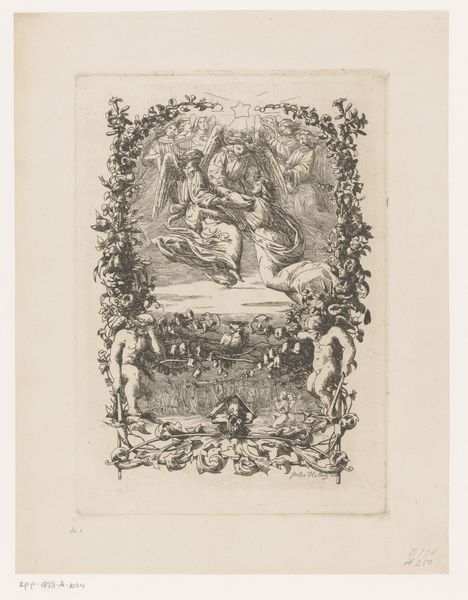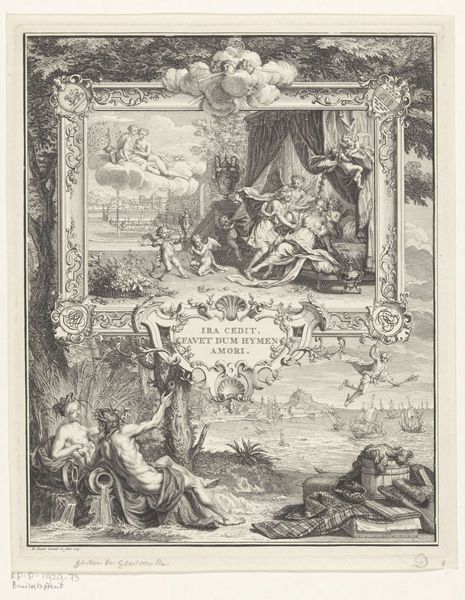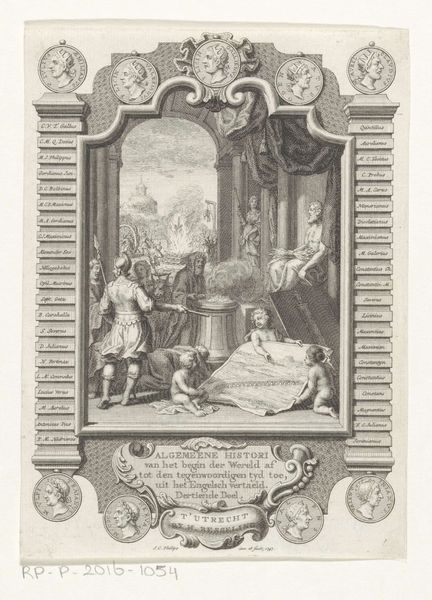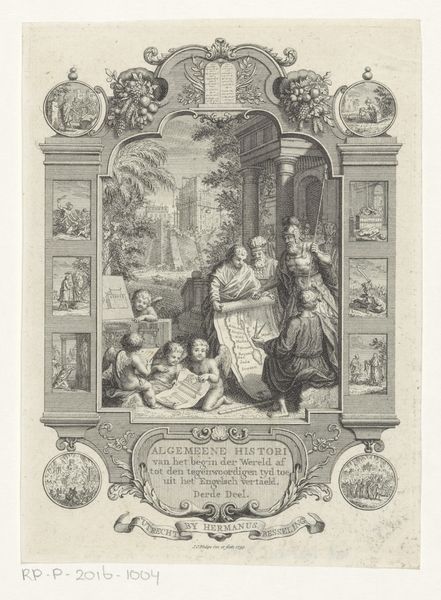
print, engraving
#
allegory
#
baroque
# print
#
pen sketch
#
pencil sketch
#
old engraving style
#
landscape
#
history-painting
#
engraving
Dimensions: height 178 mm, width 131 mm
Copyright: Rijks Museum: Open Domain
Curator: Here we have an engraving from 1737 by Jan Caspar Philips, titled "Poëzie treurt om de dood van Adriaan de Kramer," which translates to "Poetry Mourns the Death of Adriaan de Kramer." Editor: My initial impression is one of ornate grief. The Baroque style lends itself to a heavy, stylized mourning, but there’s also a surprising amount of activity depicted here. Curator: The engraving is filled with allegorical figures. Poetry is depicted centrally, grieving amongst cherubic figures, set within a frame itself adorned with further symbolic figures. We can read this as a statement on the place of art, specifically poetry, in commemorating important figures. The identity of the poet matters less today, but the act of remembering through art remains significant. Editor: Absolutely. Notice the strategic use of the landscape. On one side, it transitions almost seamlessly into an allegorical scene of Muses on Mount Parnassus. On the opposite side, we see the gravestone with the inscription for Kramer, next to what appears to be an allegorical depiction of silence. Visually, the artist creates a parallel: Poetry elevates, mourning stills. Curator: And within that still space there is further potential to delve deeper. Consider what the figure of Poetry embodies during a period increasingly driven by Enlightenment ideals. By choosing poetry, is Philips suggesting more than mere loss; perhaps, there is a statement being made concerning the shifting intellectual landscapes of the 18th century and the vital role of the arts in navigating times of transformation. Editor: That connects strongly with how symbols carry different resonance depending on the observer's own lived experiences. The Muses evoke tradition, the gravestone grief. The emotional weight is undeniable. But those of us living in the aftermath of centuries marked by technological and political upheaval read that figure differently now—acknowledging how grief manifests itself through collective action and memorialization as well as private emotions. Curator: This is more than a simple image of grief. It’s a commentary on cultural memory and transformation—where loss serves as a catalyst for examining what endures. Editor: Indeed. And considering it is print work, this allows art and emotion to be available across different societal classes and through different geographical settings.
Comments
No comments
Be the first to comment and join the conversation on the ultimate creative platform.
